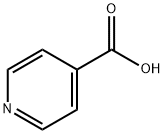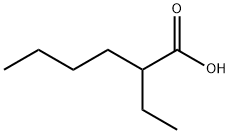Isovaleric acid
Synonym(s):3-Methylbutanoic acid;3-Methylbutyric acid;Isopentanoic acid
- CAS NO.:503-74-2
- Empirical Formula: C5H10O2
- Molecular Weight: 102.13
- MDL number: MFCD00002726
- EINECS: 207-975-3
- SAFETY DATA SHEET (SDS)
- Update Date: 2025-12-26 08:49:36

What is Isovaleric acid?
Description
Isovaleric acid has a characteristic disagreeable odor. It is extremely penetrating and persistent with a sour taste. May be synthesized by oxidation of isoamyl alcohol or isovaleric aldehyde.
Chemical properties
clear colorless to slightly yellow liquid
Chemical properties
Isovaleric acid has a characteristic disagreeable, rancid, cheese-like odor. It is extremely penetrating and persistent with a sour taste. May consist of one or a mixture of isomers or n-pentanoic acid and/or 2- or 3-methyl butanoic acid. Consumption: Annual: 1850.00 lb
Occurrence
Of the three possible isomers of n-valeric acid, only isovaleric acid has extensive application in flavoring; originally reported in seal and dolphin fat; subsequently isolated from valerian. Also reported found in the essential oils of cypress, citronella, laurel leaves, cajeput, Cymbopogon javanensis, hops, Persea pubescens, geranium, American peppermint, spearmint, rosemary, lemongrass, Eucalyptus goniocalyx and other spp., tobacco, Monarda fistulos, Thymus mastichina, Artemisia frigida, and probably in lavender; reported among the constituents of petitgrain lemon. Also reported found in many foods including apple, currants, guava, grapes, papaya, peach, pineapple, raspberry, strawberry, potato, bell pepper, vinegar, breads, many cheeses, fish, chicken, lamb, hop oil, beer, cognac, whiskies, cider, sherry, grape wines, rum, cocoa, tea, coffee, honey, soybean, passion fruit, mushrooms, marjoram, plum, brandy, starfruit, trassi, rice, jackfruit, sake, sukiyaki, buckwheat, corn oil, cashew apple, malt, wort, Bourbon vanilla, shrimp, mussels, cherimoya, Cape gooseberry and Chinese quince frui
The Uses of Isovaleric acid
Isovaleric acid is used extensively as a flavoring ingredient in nonalcoholic beverages and in foods such as ice cream, candy, baked goods, and cheese, as a fragrance ingredient in perfumes, and as a chemical intermediate in the manufacture of sedatives and other pharmaceutical products. It is also used as an extractant of mercaptans from petroleum hydrocarbons, a vinyl stabilizer, and as an intermediate in the manufacture of plasticizers and synthetic lubricants.
The Uses of Isovaleric acid
In flavors, perfumes, manufacture of sedatives.
The Uses of Isovaleric acid
A molecular entity capable of donating a hydron to an acceptor (Bronsted base). It is a favorable carbon source for cell growth. Moreover, it is a promising odor indicator.
What are the applications of Application
Isovaleric acid is an inhibitor of the synthesis of saturated acids
Definition
ChEBI: A C5, branched-chain saturated fatty acid.
Preparation
By oxidation of isoamyl alcohol or isovaleric aldehyde
Aroma threshold values
Detection: 190 ppb to 2.8 ppm
Synthesis Reference(s)
Chemical and Pharmaceutical Bulletin, 30, p. 2787, 1982 DOI: 10.1248/cpb.30.2787
Tetrahedron Letters, 23, p. 3135, 1982 DOI: 10.1016/S0040-4039(00)88578-0
General Description
Isovaleric acid is a colorless liquid with a penetrating odor. Isovaleric acid is slightly soluble in water. Isovaleric acid is corrosive to metals and to tissue.
Air & Water Reactions
Isovaleric acid is slightly soluble in water.
Reactivity Profile
Isovaleric acid is a carboxylic acid. Carboxylic acids donate hydrogen ions if a base is present to accept them. They react in this way with all bases, both organic (for example, the amines) and inorganic. Their reactions with bases, called "neutralizations", are accompanied by the evolution of substantial amounts of heat. Neutralization between an acid and a base produces water plus a salt. Carboxylic acids with six or fewer carbon atoms are freely or moderately soluble in water; those with more than six carbons are slightly soluble in water. Soluble carboxylic acid dissociate to an extent in water to yield hydrogen ions. The pH of solutions of carboxylic acids is therefore less than 7.0. Many insoluble carboxylic acids react rapidly with aqueous solutions containing a chemical base and dissolve as the neutralization generates a soluble salt. Carboxylic acids in aqueous solution and liquid or molten carboxylic acids can react with active metals to form gaseous hydrogen and a metal salt. Such reactions occur in principle for solid carboxylic acids as well, but are slow if the solid acid remains dry. Even "insoluble" carboxylic acids may absorb enough water from the air and dissolve sufficiently in Isovaleric acid to corrode or dissolve iron, steel, and aluminum parts and containers. Carboxylic acids, like other acids, react with cyanide salts to generate gaseous hydrogen cyanide. The reaction is slower for dry, solid carboxylic acids. Insoluble carboxylic acids react with solutions of cyanides to cause the release of gaseous hydrogen cyanide. Flammable and/or toxic gases and heat are generated by the reaction of carboxylic acids with diazo compounds, dithiocarbamates, isocyanates, mercaptans, nitrides, and sulfides. Carboxylic acids, especially in aqueous solution, also react with sulfites, nitrites, thiosulfates (to give H2S and SO3), dithionites (SO2), to generate flammable and/or toxic gases and heat. Their reaction with carbonates and bicarbonates generates a harmless gas (carbon dioxide) but still heat. Like other organic compounds, carboxylic acids can be oxidized by strong oxidizing agents and reduced by strong reducing agents. These reactions generate heat. A wide variety of products is possible. Like other acids, carboxylic acids may initiate polymerization reactions; like other acids, they often catalyze (increase the rate of) chemical reactions.
Hazard
Strong irritant to tissue.
Health Hazard
TOXIC; inhalation, ingestion or skin contact with material may cause severe injury or death. Contact with molten substance may cause severe burns to skin and eyes. Avoid any skin contact. Effects of contact or inhalation may be delayed. Fire may produce irritating, corrosive and/or toxic gases. Runoff from fire control or dilution water may be corrosive and/or toxic and cause pollution.
Fire Hazard
Non-combustible, substance itself does not burn but may decompose upon heating to produce corrosive and/or toxic fumes. Some are oxidizers and may ignite combustibles (wood, paper, oil, clothing, etc.). Contact with metals may evolve flammable hydrogen gas. Containers may explode when heated.
Properties of Isovaleric acid
| Melting point: | -29 °C (lit.) |
| Boiling point: | 175-177 °C (lit.) |
| Density | 0.925 g/mL at 20 °C (lit.) |
| vapor pressure | 0.38 mm Hg ( 20 °C) |
| refractive index | n |
| FEMA | 3102 | ISOVALERIC ACID |
| Flash point: | 159 °F |
| storage temp. | Store below +30°C. |
| solubility | 48g/l |
| pka | 4.77(at 25℃) |
| form | Liquid |
| Specific Gravity | 0.928 (20/20℃) |
| color | Clear colorless to slightly yellow |
| PH | 3.92(1 mM solution);3.4(10 mM solution);2.89(100 mM solution); |
| Odor | at 1.00 % in propylene glycol. sour stinky feet sweaty cheese tropical |
| explosive limit | 1.5-6.8%(V) |
| Water Solubility | 25 g/L (20 ºC) |
| Merck | 14,5231 |
| JECFA Number | 259 |
| BRN | 1098522 |
| Dielectric constant | 2.6(20℃) |
| CAS DataBase Reference | 503-74-2(CAS DataBase Reference) |
| NIST Chemistry Reference | Butanoic acid, 3-methyl-(503-74-2) |
| EPA Substance Registry System | Isovaleric acid (503-74-2) |
Safety information for Isovaleric acid
| Signal word | Danger |
| Pictogram(s) |
 Corrosion Corrosives GHS05 |
| GHS Hazard Statements |
H314:Skin corrosion/irritation |
| Precautionary Statement Codes |
P280:Wear protective gloves/protective clothing/eye protection/face protection. P363:Wash contaminated clothing before reuse. P301+P330+P331:IF SWALLOWED: Rinse mouth. Do NOT induce vomiting. P303+P361+P353:IF ON SKIN (or hair): Remove/Take off Immediately all contaminated clothing. Rinse SKIN with water/shower. P305+P351+P338:IF IN EYES: Rinse cautiously with water for several minutes. Remove contact lenses, if present and easy to do. Continuerinsing. |
Computed Descriptors for Isovaleric acid
Isovaleric acid manufacturer
New Products
4,4-Difluoropiperidine hydrochloride tert-butyl 9-methoxy-3-azaspiro[5.5]undecane-3-carboxylate Indole Methyl Resin N-Isopropylurea N,N-Dicyclohexylcarbodiimide(DCC) MELDRUMS ACID 5-METHYLISOXAZOLE-4-CARBOXYLIC ACID Magnessium Bis glycinate Zinc ascorbate 1-bromo-2-butyne 2-acetamidophenol 9(10H)-anthracenone Erythrosin B, 4-Piperidinopiperidine 2-((4-morpholinophenylamino) (methylthio) methylene) malononitrile 2,4-dihydroxybenzaldehyde 3-(4-morpholinophenylamino)-5-amino-1H-pyrazole-4-carbonitrile Methyl 2-methylquinoline-6-carboxylate 2,6-dichloro-4-nitropyridine 4-Bromo-2-chlorobenzonitrile 2-(benzylamino)acetic acid hydrochloride 4-(tert-Butoxycarbonylamino)but- 2-ynoic acid 3,4-dihydro-2H-benzo[b][1,4]dioxepine 1-Phenyl-1-cycloprppanecarboxylicacidRelated products of tetrahydrofuran








You may like
-
 ISOVALERIC ACID 99%View Details
ISOVALERIC ACID 99%View Details -
 Isovaleric acid 98%View Details
Isovaleric acid 98%View Details -
 Isovaleric acid, 99% CAS 503-74-2View Details
Isovaleric acid, 99% CAS 503-74-2View Details
503-74-2 -
 Isovaleric Acid CAS 503-74-2View Details
Isovaleric Acid CAS 503-74-2View Details
503-74-2 -
 Isovaleric acid 98% CAS 503-74-2View Details
Isovaleric acid 98% CAS 503-74-2View Details
503-74-2 -
 Isopentanoic acid CAS 503-74-2View Details
Isopentanoic acid CAS 503-74-2View Details
503-74-2 -
 Isovaleric acid CAS 503-74-2View Details
Isovaleric acid CAS 503-74-2View Details
503-74-2 -
 Isovaleric acid CAS 503-74-2View Details
Isovaleric acid CAS 503-74-2View Details
503-74-2
